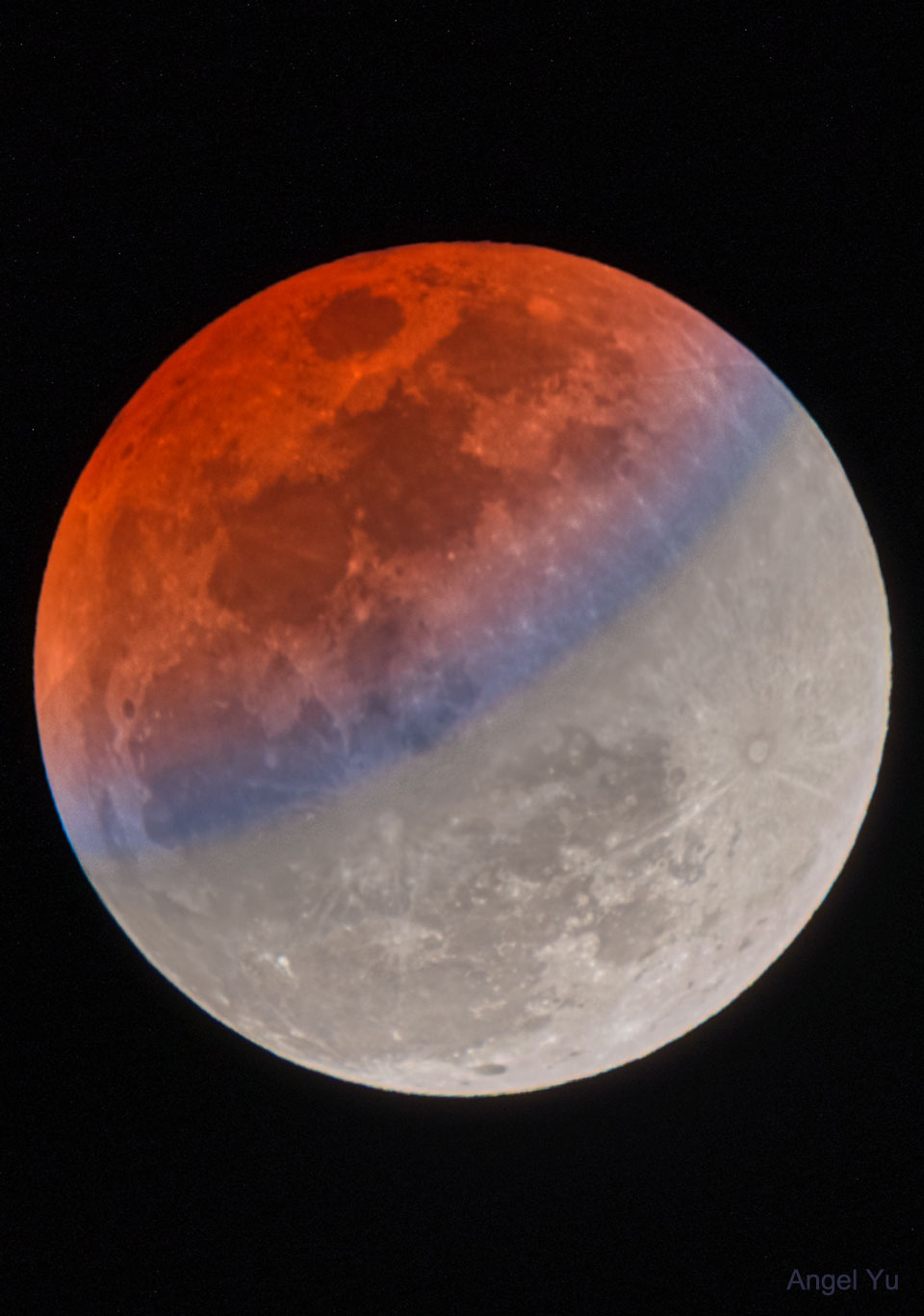Blue-Banded Blood Moon
https://science.nasa.gov/blue-banded-blood-moon. This part of the Moon is red -- and called a blood Moon -- for the same reason that Earth's sunsets are red: because air scatters away more blue light than red. The unusual blue band is different -- its color is created by sunlight that has passed high through Earth's atmosphere, where red light is better absorbed by ozone than blue. A total eclipse of the Sun will occur tomorrow but, unfortunately, totality be visible only near the Earth's South Pole.
APOD
http://sprite.phys.ncku.edu.tw/astrolab/mirrors/apod/ap211201.html
在月食期間,為何月亮會鑲著一道藍帶?
這道藍帶是真的,只是非常難分辨。
這幅在上星期月食期間、攝於中國.鹽城市的高動態範圍影像,數位拉平月亮明暗區的亮度差異,並誇大月面的色澤,才讓這道藍帶得以顯現出來。 不過,影像右下方受陽光直射的月盤,其泛灰的色澤是月亮的真實自然色彩。 左上的月盤在月食期間,則進入地球的暗影裡,因此沒受陽光直接照射。 當時淡淡照耀它的,是深入地球大氣層的紅化陽光。 因此,此區的月面色澤泛紅,故有血月之稱;
其成因與泛紅的落日雷同,都是因為陽光中的紅光受到散射移除的比率高於藍光之故。
然而月盤不尋常藍帶的成因不同,因為照亮它的,是穿過地球高層大氣的藍化陽光,源自臭氧層對紅光的吸收高於藍光。 明天將再發生日全食,不過很遺憾的,只有在地球南極附近才得見。
 會員專區
會員專區 
